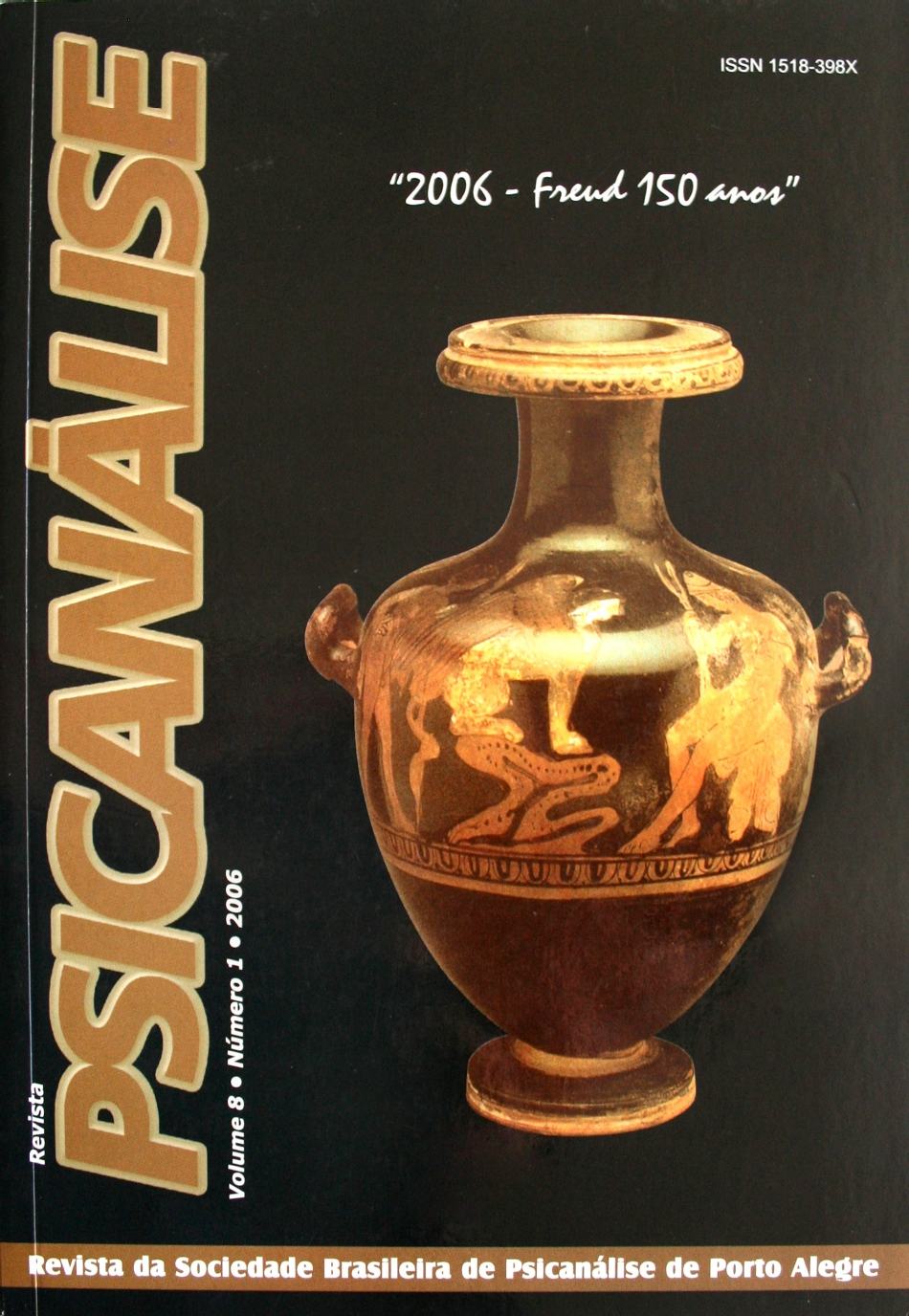Salieri’s dilemma
a counterpoint between envy and appreciation
Keywords:
Envy, Transference, CountertransferenceAbstract
Taking as its starting point Klein’s concepts of 1957, this paper stresses certain characteristics of envy which have not yet been taken into account in psychoanalysis. Klein described the conflict between envy and gratitude as inherent in the human being; she suggested an interesting link between envy and admiration, but never developed this idea in her theory. The hypothesis that we put forward in this paper is the existence of a particular intolerance – related to envy – of one’s own capacity to recognize the valuable aspects of the object. This situation leads to the paradox that the same faculty that allows the patient to appreciate the good qualities of the object is at the same time the source of unbearable pain. The capacity to recognize the good aspects of the object – whether they are perceived or attributed by projective identification – cannot be accepted as a valuable aspect of the self and is taken as a proof of the self’s unworthiness. We think that the description of this intolerance towards admirative appreciation introduces a change in the understanding of idealization simply as a defence against envy and enriches the conflict expressed in the immediacy of the transference-countertransference.
Downloads
References
ABRAHAM, K. (1919). A particular form of neurotic resistance against the psychoanalytic method. In: Selected Papers on Psycho Analysis. London: Hogarth Press, 1942. p.303 312.
BION, W. (1959). Attacks on linking. In: ______. Second Thoughts. New York: Jason Aronson, 1967.
BOTT-SPILLIUS, E. Varieties of emotional experience. International Journal of Psychoanalysis, London, v.74, p.1199-1212, 1993.
ETCHEGOYEN, R.H.; LÓPEZ, B.; RABIH, M. On envy and how to interpret it. International Journal of Psychoanalysis, London, v.68, p.49-61, 1987.
FREUD, S. (1917). Mourning and melancholia. In: ______. Standard Edition. v.14.
______. (1931). Female sexuality. In: ______. Standard Edition. v.21.
______. (1939). Moses and monotheism. In: ______. Standard Edition. v.23.
JOSEPH, B. (1959). Psychic Equilibrium and Psychic Change. London: Routledge, 1989.
KLEIN, M. A contribution to the psychogenesis of maniac-depressive states. International Journal of Psychoanalysis, London, v.16, p.145-174, 1934.
______. (1957). Envy and gratitude. In: ______. Envy and Gratitude and Other Works. Londres: Hogarth Press, 1975. p.48-56.
MELTZER, D. The differentiation of somatic delusion from hypochondria. International Journal of Psychoanalysis, London, v.45, p.246-250, 1954.
______. The Relation of anal masturbation to projective identification. International Journal of Psychoanalysis, London, v.47, p.335-342, 1966.
______. Sexual States of Mind. Pertshire: Clunie Press, 1973.
MELTZER, D.; WILLIAMS, M.H. The Apprehension of Beauty: the role of aesthetic conflict in development, art and violence. Pertshire: Clunie Press, 1988.
MONEY-KYRLE, R. Cognitive Development. Pertshire: Clunie Press, 1965.
RACKER, H. Estudios sobre Técnica Psicoanalítica. Buenos Aires: Paidós, 1960.
RIVIÈRE, J. Jealousy as a mechanism of defense. International Journal of Psychoanalysis, London, v.13, p.414-424, 1932.
______. A contribution to the analysis of the negative therapeutic reaction. International Journal of Psychoanalysis, London, v.17, p.304-320, 1936.
SEGAL, H. The Work of Hanna Segal. New York: Jason Aronson, 1981.
STEINER, J. (1985). Psychic Retreats. London: Routledge, 1993.
ETCHEGOYEN, R.H.; LÓPEZ, B.; RABIH, M. (1985). De la interpretación de la envidia. Revista de Psicoanálisis, Buenos Aires, v.XLII, n.5, p.1019-1041, 1985.
Downloads
Published
How to Cite
Issue
Section
License

This work is licensed under a Creative Commons Attribution-NonCommercial-NoDerivatives 4.0 International License.
I attribute the copyrights that belong to me, on this work, to SBPdePA, which may use and publish it by the means it deems appropriate, including on the Internet or in any other computer processing.












